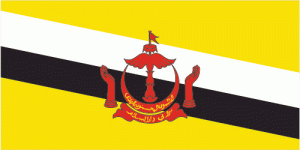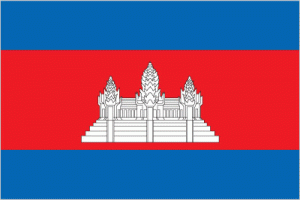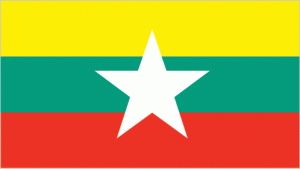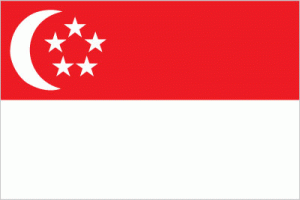Countries in Southeastern Asia
The region known as Southeast Asia, as its name implies, is located in the southeastern portion of the continent and covers the territories of countries such as Malaysia, Brunei and Indonesia. A good part of the population of this region lives on agriculture and live in rural areas. Therefore, the urban population in this region is smaller than the rural.
How Many Countries in Southeastern Asia
As a region of Asia, Southeastern Asia is composed of 11 independent countries (Brunei, Burma, Cambodia, Indonesia, Laos, Malaysia, Philippines, Singapore, Thailand, Timor-Leste, and Vietnam). See below for the full list of Southeastern Asian Countries by population.
1. Brunei
Brunei is a small state in Southeast Asia that consists of two separate areas on the northwest coast of the island of Borneo completely surrounded by the Malaysian state of Sarawak. The most common language is Malay and in 2013, more than 400,000 people lived in Brunei.
 |
|
2. Cambodia
Cambodia, formally the Kingdom of Cambodia, is a monarchy in Southeast Asia. The country borders Thailand to the west, Laos to the north and Vietnam to the east. In the southwest, the country has a coast towards the Gulf of Thailand.
 |
|
3. Philippines
The Philippines, formally the Republic of the Philippines, is a country in Southeast Asia in the western Pacific Ocean. North of the Luzon Strait is Taiwan. West of the South China Sea is Vietnam.
 |
|
4. Indonesia
Indonesia, officially the Republic of Indonesia, is a state in Southeast Asia and Oceania. Indonesia consists of over 13,000 islands and 33 provinces.
 |
|
5. Laos
Laos, formally the Democratic People’s Republic of Laos, is a country in Southeast Asia. The country borders Burma and Thailand to the west, Vietnam to the east, Cambodia to the south and China to the north.
 |
|
6. Malaysia
Malaysia is a federal state in Southeast Asia, consisting of former British possessions on the Malacca Peninsula and northern Borneo.
 |
|
7. Myanmar
Burma (the name used by the opposition) or Myanmar (the term coined by the incumbent military regime) is by far the largest country on the Southeast Asian mainland. The country borders China, Bangladesh, India, Laos and Thailand.
 |
|
8. Singapore
Singapore, formally the Republic of Singapore, is an island nation and city-state that is Southeast Asia’s smallest country. It is a republic at the southern tip of the Malacca Peninsula.
 |
|
9. Thailand
Thailand, officially the Kingdom of Thailand, formerly known as Siam, is a country located in the central part of the Indochinese Peninsula, in Southeast Asia.
 |
|
10. East Timor
East Timor or Timor-Leste, formally the Democratic Republic of East Timor, is a state in Southeast Asia. The country consists of the eastern part of the island of Timor and an exclave on the western part of the island. Around 42% of the country’s population is under 15 years old.
 |
|
11. Vietnam
Vietnam, formally the Socialist Republic of Vietnam, is located in Southeast Asia and borders China, Laos and Cambodia. Here on the country side there is news, link tips, latest news from the embassy, travel information from the Ministry of Foreign Affairs, our agents’ contact information, events in the country and the opportunity to contact Swedes living in Vietnam.
 |
|
List of Countries in Southeastern Asia and Their Capitals
As noted above, there are eleven independent countries in the Southeast Asia. Among them, the largest country is Indonesia and the smallest is Brunei in term of population. The full list of Southeastern Asia countries with capitals is shown in the table below, ranked by latest total population and area.
| Rank | Country Name | Population | Land Area (km²) | Capital |
| 1 | Indonesia | 268,074,600 | 1,811,569 | Jakarta |
| 2 | Philippines | 107,808,000 | 298,170 | Manila |
| 3 | Vietnam | 95,354,000 | 310,070 | Hanoi |
| 4 | Thailand | 66,377,005 | 510,890 | Bangkok |
| 5 | Burma | 54,339,766 | 653,508 | Rangoon, Naypyidaw or Nay Pyi Taw |
| 6 | Malaysia | 32,769,200 | 329,613 | Kuala Lumpur |
| 7 | Cambodia | 16,289,270 | 176,515 | Phnom Penh |
| 8 | Laos | 7,123,205 | 230,800 | Vientiane |
| 9 | Singapore | 5,638,700 | 687 | Singapore |
| 10 | Timor-Leste | 1,387,149 | 14,919 | Dili |
| 11 | Brunei | 442,400 | 5,265 | Bandar Seri Begawan |
Map of Southeastern Asian Countries

Brief History of Southeastern Asia
Early Civilizations and Maritime Trade
1. Ancient Cultures:
Southeastern Asia is home to some of the world’s oldest known civilizations. The region’s early inhabitants, such as the indigenous Austronesian peoples, engaged in agriculture, fishing, and trade. Important early civilizations emerged in present-day Vietnam, Thailand, Cambodia, Indonesia, and the Philippines, leaving behind impressive archaeological sites like Angkor Wat in Cambodia and Borobudur in Indonesia.
2. Maritime Trade Routes:
Southeast Asia’s strategic location between the Indian Ocean and the Pacific Ocean made it a hub for maritime trade. Ancient seafaring civilizations, such as the Srivijaya Empire based in Sumatra and the Majapahit Empire in Java, controlled crucial trade routes and amassed wealth through commerce with China, India, and the Middle East.
Indianization and the Spread of Hinduism and Buddhism
1. Indian Influence:
Beginning around the 1st century CE, Indian traders, scholars, and missionaries brought Hinduism and Buddhism to Southeast Asia. Indian cultural and religious influences, collectively known as “Indianization,” spread throughout the region, leaving a lasting impact on Southeast Asian art, architecture, language, and belief systems.
2. Kingdoms and Empires:
The influence of Indian civilization facilitated the rise of powerful kingdoms and empires in Southeast Asia. The Khmer Empire, centered in present-day Cambodia, reached its zenith during the Angkor period (9th to 15th centuries CE), constructing elaborate temple complexes like Angkor Wat and Angkor Thom. The Srivijaya and Majapahit Empires, based in modern-day Indonesia, dominated maritime trade and exerted influence over neighboring polities.
Islamic Sultanates and Trade Networks
1. Islamic Influence:
From the 13th century onwards, Islam spread to Southeast Asia through trade and missionary activities. Muslim merchants and Sufi mystics established communities along the region’s coastal areas, leading to the emergence of Islamic sultanates such as Malacca, Aceh, and Brunei. Islam coexisted with existing belief systems, resulting in syncretic forms of spirituality and culture.
2. Trade Networks:
Islamic sultanates played a crucial role in facilitating trade between the East and the West. The Malacca Sultanate, situated strategically on the Strait of Malacca, controlled maritime commerce and became a center of cultural exchange between Asia, the Middle East, and Europe. Southeast Asia’s spices, textiles, and other commodities were highly sought after in global markets.
European Colonialism and Imperialism
1. European Arrival:
In the 16th century, European powers, notably Portugal, Spain, the Netherlands, and later Britain and France, began colonizing Southeast Asia. They sought to establish trading outposts, exploit natural resources, and extend their influence in the region. The Portuguese were the first Europeans to arrive, followed by the Dutch, who dominated the lucrative spice trade.
2. Colonial Rule:
Over the centuries, Southeast Asia came under the control of various European colonial powers. The British established colonies in Malaya, Singapore, and Burma (present-day Myanmar), while the French colonized Vietnam, Laos, and Cambodia (Indochina). The Dutch controlled the East Indies (Indonesia), and Spain held the Philippines. Colonial rule brought significant changes to Southeast Asian societies, including the introduction of Christianity, modern infrastructure, and plantation economies.
Independence Movements and Modern Nation-States
1. Independence Struggles:
During the 20th century, nationalist movements emerged across Southeast Asia, seeking to overthrow colonial rule and establish independent nation-states. Leaders such as Sukarno in Indonesia, Ho Chi Minh in Vietnam, and Jose Rizal in the Philippines galvanized popular support for independence through political activism and armed resistance.
2. Formation of Nation-States:
Following World War II and the decline of colonial empires, most countries in Southeast Asia gained independence. The region witnessed the establishment of new nation-states, often marked by struggles for political stability, ethnic tensions, and Cold War rivalries. The Association of Southeast Asian Nations (ASEAN) was formed in 1967 to promote regional cooperation and economic development among member states.
Contemporary Challenges and Regional Dynamics
1. Economic Development:
In the post-colonial era, Southeast Asia experienced rapid economic growth and industrialization, transforming countries like Singapore, Malaysia, Thailand, and Indonesia into emerging economies. However, disparities in wealth, environmental degradation, and social inequalities remain pressing challenges for the region.
2. Political Stability:
Southeast Asia faces ongoing challenges related to political stability, governance, and human rights. Authoritarian regimes, ethnic conflicts, and religious tensions persist in countries like Myanmar, Thailand, and the Philippines, impacting democratic progress and social cohesion.













































